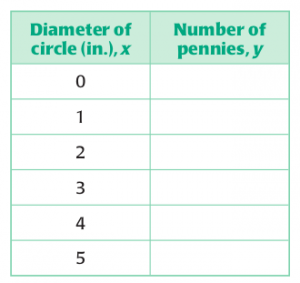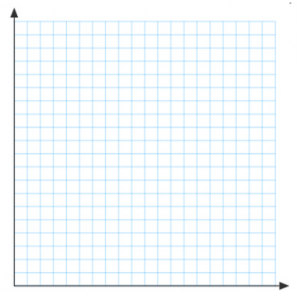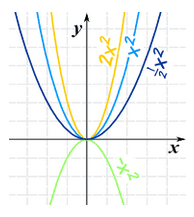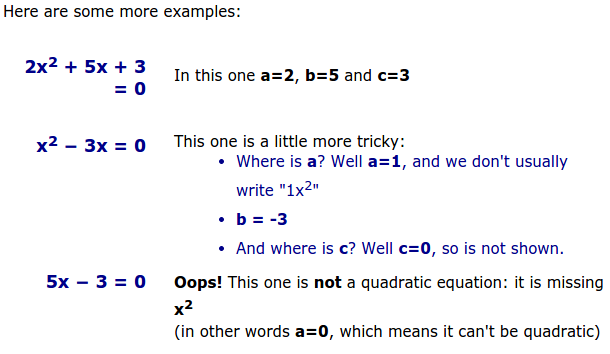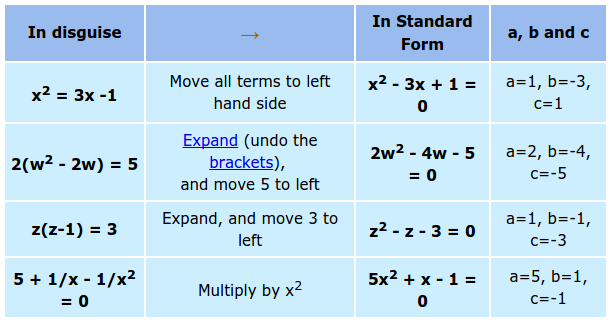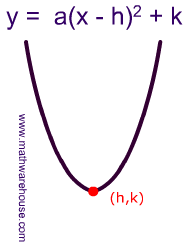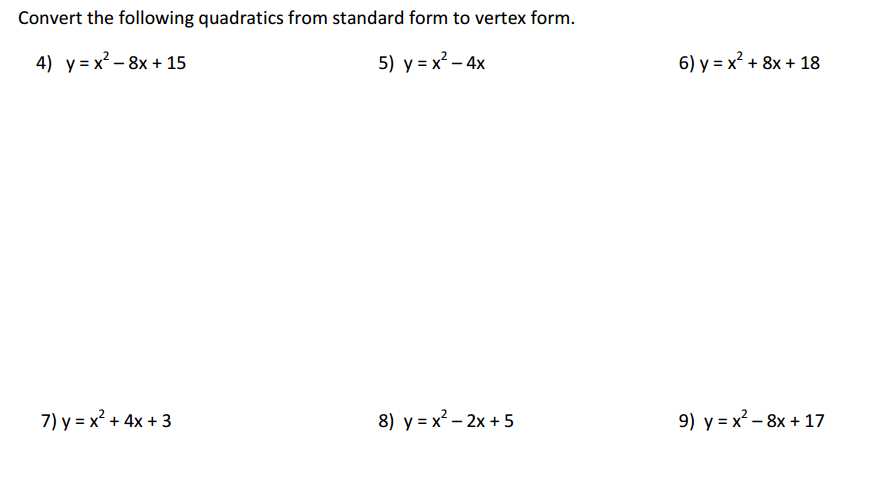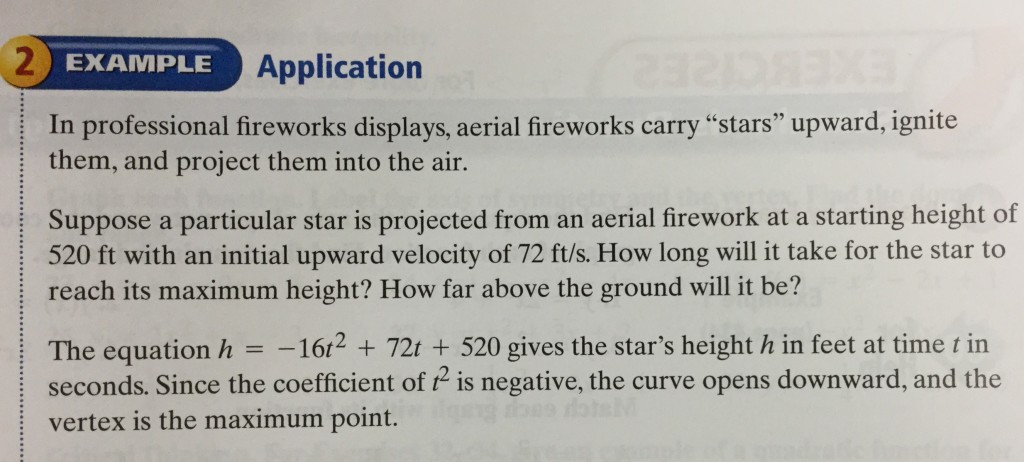Making sense of quadratic functions by examining their graphs
[expand title=”Graphing Quadratic Functions”]
Introduction: Will it hit the hoop?
Collecting data: Penny Circle
Introduction: Dan Meyer – Penny Circle
http://vimeo.com/44558245
Materials:
- Compass
- 50 pennies
Instructions:
- Step 1: Draw 5 circles using a compass. Use diameters 1, 2, 3, 4, and 5 inches. Place as many pennies as you can in each circle, making sure that each penny is completely within the circle (Penny Circles)
- Step 2: Record your findings in a table like the one shown. Also include a prediction for the number of pennies that would fit in a circle with a diameter of zero inches.
[/ezcol_2fifth][ezcol_3fifth_end]
- Step 3: Make a scatter plot of your predictions. Fit a line to your scatter plot. Describe what your line looks like.
- Step 4: Use your graph to predict how many pennies will fit in a 6 inch circle. Then, Draw a 6 inch circle and test your prediction. How reasonable was your prediction?
- Beyond: Predict how many pennies will be in the huge circle in the video.
[/expand]
Examining the structure of a quadratic function and relating it to its graph.
[expand title=”Getting to know Quadratics”]
Desmos:
- Polygraph
- Marbleslides
What is a quadratic function?
First, what is a function? (Hint: it is in your notes). A function defines a relation for which each input has one (and only one) output.
So a quadratic function is a still a relation for which each input has one output, except the rule which defines the relation contains a variable that is squared. It is said to have a degree of 2.
Ex:
Write your own quadratic function…
What to know about quadratic functions
- The name quadratic comes from “quad” meaning square, because the variable gets squared (such as
).
A quadratic function is a function in the form:
Where a, b, and c are real numbers and a is not equal to zero.
- What are some examples of real numbers?
- Why cannot a be equal to zero?
So, what do a, b, and c do? Lets have a look…
The Simplest Quadratic: and its graph:
When we introduce the “a” value:
- Larger values of a squeeze the curve
- Smaller values (closer to zero) of a expand the graph
- And negative values of a flip it upside down
[/expand]
Using the different forms of quadratic functions
[expand title=”The Different Forms of Quadratics”]
A quadratic function is a function in Standard Form: (Yes, you have seen this before). This is the most common way of writing a quadratic function.
Where a, b, and c are real numbers and a is not equal to zero.
Sometimes a quadratic is not in standard form, but it is still a quadratic. For example:
We can also write them in Vertex Form.
But first, what is a vertex?
- The vertex is the point representing the maximum or minimum of a parabola, depending of it is opening up or down.
- We can convert from standard for to vertex form
Converting between standard form and vertex form
- First, why would we use vertex form? Well, h and k represent the maximum or minimum, so if we know that point, we can graph the function easier.
- Also, the curve is symmetrical (mirror image) about the axis that passes through
x = h
How do we find h and k?
and
- Find h, then solve f(h) to find k
Day 2 Assignment:
Converting and Graphing Vertex Form
[/expand]
[expand title=”Practice with Quadratics”]
- PH 9-2
- Axis of symmetry
- Graphing quadratics from standard form
- Graphing quadratic inequalities
- Matching graphs with equations
- Assignment: P. 436-437 (1-31, 38-39)
Linear versus quadratic
Mr. Wiggins gives his daughter Celia two choices of payment for raking leaves:
- Two dollars for each bag of leaves filled,
- She will be paid for the number of bags of leaves she rakes as follows: two cents for filling one bag, four cents for filling two bags, eight cents for filling three bags, and so on, with the amount doubling for each additional bag filled.
- If Celia rakes enough to five bags of leaves, should she opt for payment method 1 or 2? What if she fills ten bags of leaves?
- How many bags of leaves would Celia have to fill before method 2 pays more than method 1?
Linear versus quadratic task
Linear versus Quadratic task 1-2
[/expand]
